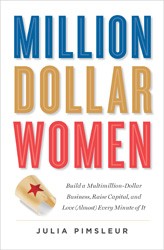It is an oft-quoted adage in synagogue circles that a budget is an ethical document; it lays out the values of an institution in a more detailed and honest way than any mission statement could. In reading Daniel Judson’s remarkably well researched and entertaining Pennies for Heaven, one understands just how deeply our finances mirror our beliefs.
Judson commences his study of American synagogue finances at the very beginning of American Jewry, examining how the first communities to settle in the New World dealt with funding their buildings, allocating charity, and paying their staff. For the rest of the book, Judson explores how many of these early fiscal choices were questioned and modified by later generations.
Though Judson is a masterful storyteller who can make long-ago synagogue presidents come alive, he is perhaps most impressive when showing how synagogue finances parallel trends and movements in the American Jewish story. For example, he demonstrates how the move away from raising money through selling seats toward a model of open seating was as much a reflection of the democratic and equalizing spirit of post – World War II America as it was a product of financial necessity. Likewise, he explains that the phenomenon of pop-up, for-profit “mushroom synagogues” — which were vehemently opposed by the Jewish establishment — was a direct result of the entrepreneurial spirit of the first part of the twentieth century. It was also an outgrowth of the tension, commonly felt at the time, between one’s fidelity to institutions and one’s dedication to the self.
Since money is involved in nearly every decision of a religious community, Pennies for Heaven reads much like a broader history of the American synagogue. In it, we learn about the rise of the professional rabbinate, liberal Judaism’s turn toward social justice during the Great Depression, and the birth of suburban Jewry. The book also explores many of the most pressing questions in synagogue life today: How can a community be both open to all and still well funded? How can a community preach liberal values and not alienate its wealthy, more conservative donor base? How much should neighboring synagogues compete with one another for resources? Though all of these questions are couched in a wider discussion of a historical phenomenon, each example feels pressing and relevant — even if it happened two hundred years ago.
Judson’s analysis culminates in the final chapter, which addresses the unique trends in synagogue funding today. As the author explains, the successes of Chabad, the rise of the independent minyanim, and the breakdown of denominational affiliations have thrown into question the ways that synagogues approach finances. However, rather than regarding these changes with fear, Judson gives us the tools to greet them with optimism. His pages are filled with stories of communities who faced major challenges because of transformations happening within the Jewish community and American society at large — and who nevertheless persevered. Pennies for Heaven thoughtfully reassures the reader that when synagogues face financial pressures, they stand on the shoulders of generations who came before them. If our American forebearers could reimagine a renewed and sustainable Judaism, then so might we.
Rabbi Marc Katz is the Rabbi at Temple Ner Tamid in Bloomfield, NJ. He is author of the books Yochanan’s Gamble: Judaism’s Pragmatic Approach to Life (JPS) chosen as a finalist for the PROSE award and The Heart of Loneliness: How Jewish Wisdom Can Help You Cope and Find Comfort (Turner Publishing) which was chosen as a finalist for the National Jewish Book Award.




